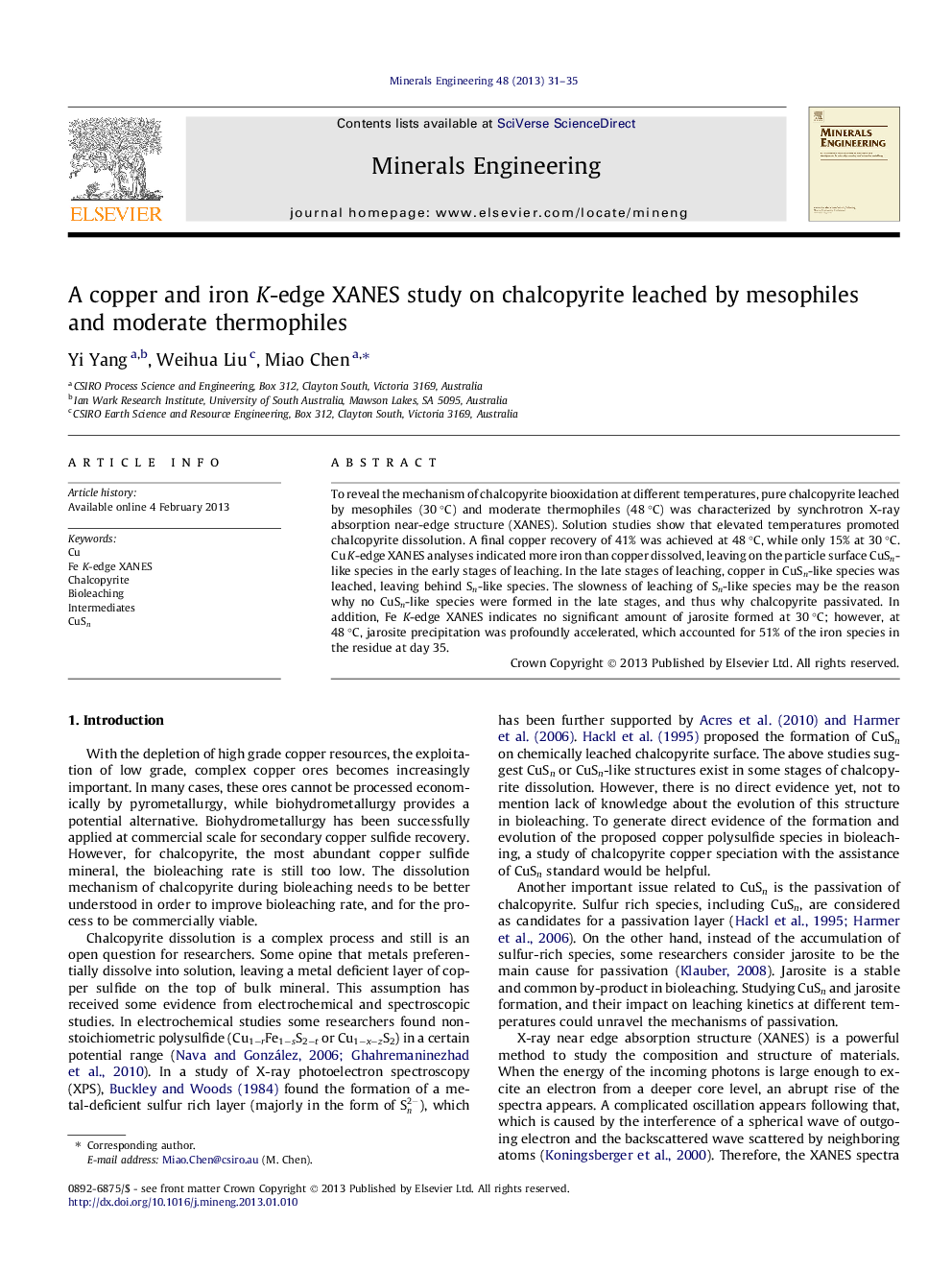| Article ID | Journal | Published Year | Pages | File Type |
|---|---|---|---|---|
| 233431 | Minerals Engineering | 2013 | 5 Pages |
To reveal the mechanism of chalcopyrite biooxidation at different temperatures, pure chalcopyrite leached by mesophiles (30 °C) and moderate thermophiles (48 °C) was characterized by synchrotron X-ray absorption near-edge structure (XANES). Solution studies show that elevated temperatures promoted chalcopyrite dissolution. A final copper recovery of 41% was achieved at 48 °C, while only 15% at 30 °C. Cu K-edge XANES analyses indicated more iron than copper dissolved, leaving on the particle surface CuSn-like species in the early stages of leaching. In the late stages of leaching, copper in CuSn-like species was leached, leaving behind Sn-like species. The slowness of leaching of Sn-like species may be the reason why no CuSn-like species were formed in the late stages, and thus why chalcopyrite passivated. In addition, Fe K-edge XANES indicates no significant amount of jarosite formed at 30 °C; however, at 48 °C, jarosite precipitation was profoundly accelerated, which accounted for 51% of the iron species in the residue at day 35.
► First use of copper and iron K-edge XANES to study bioleaching systems. ► Direct evidence of CuSn-like structures formed during chalcopyrite bioleaching. ► A CuSn-like phase accumulated in early stage and decreased in late stage. ► At 30 °C, jarosite was less likely to accumulate even after long term bioleaching.
